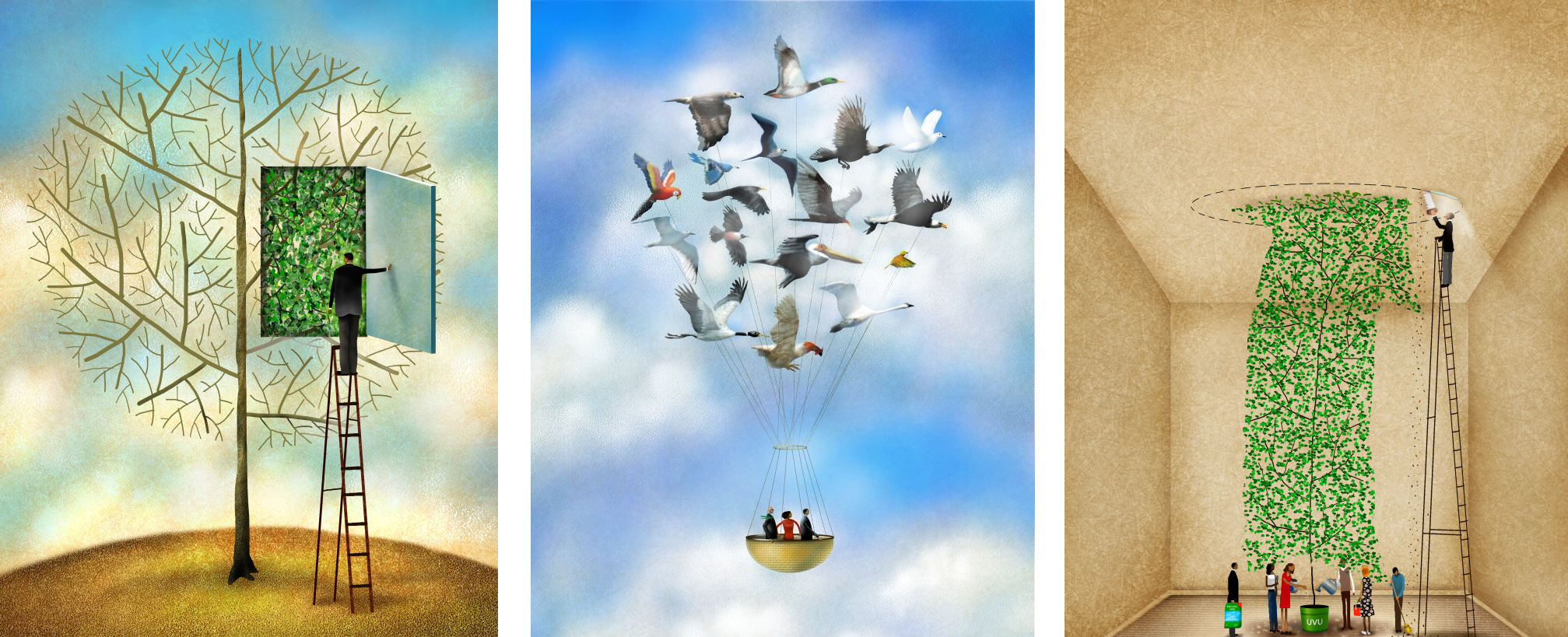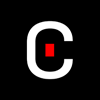
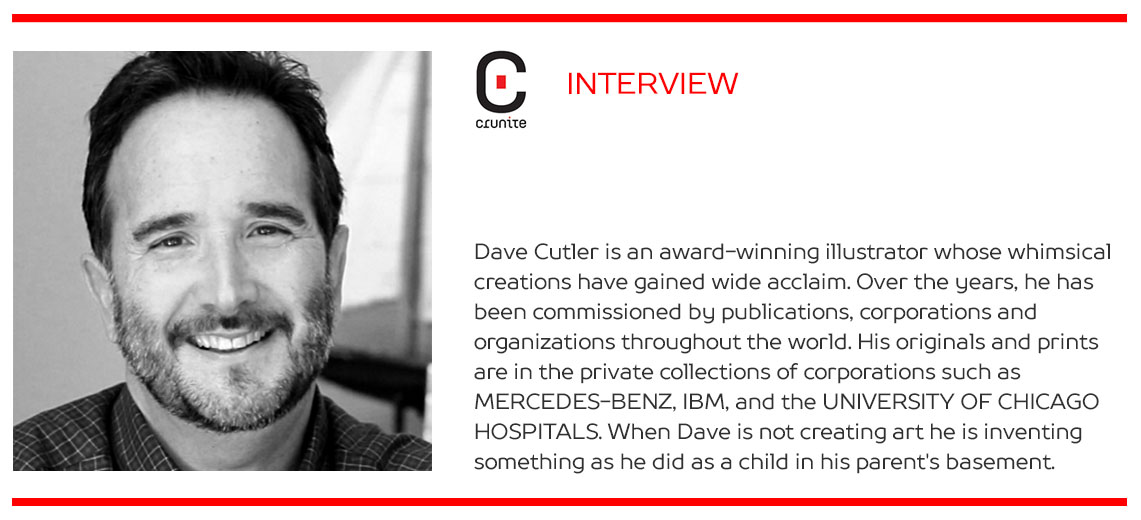
At school (School of Visual Arts NYC) my style was considerably more realistic but I found that I was naturally inclined to come up with conceptual imagery in my head. So I was conflicted between trying to use realism that was forced into a conceptual image.
After school one of my first major commissions was for PC Magazine. They needed six spot illustrations and gave me just the weekend to complete it. So I decided to just draw out of my head without the concern for realism. I found the experience both freeing and enjoyable. So did the client. This gave me the confidence I needed to let go of the realism and create work that was more conceptual and I guess somewhat impressionistic.
But like many illustrators at the time, I was heavily influenced by the great Brad Holland whose work captured for me what illustration could be. But obviously I did not want to be simply an imitator. So I struggled to find a style that I felt like it was my own. That took time because it had to feel natural and not contrived and work for the concepts I envisioned in my head. Eventually over time I found a “visual voice” that felt comfortable and was my own (at least I think it is).
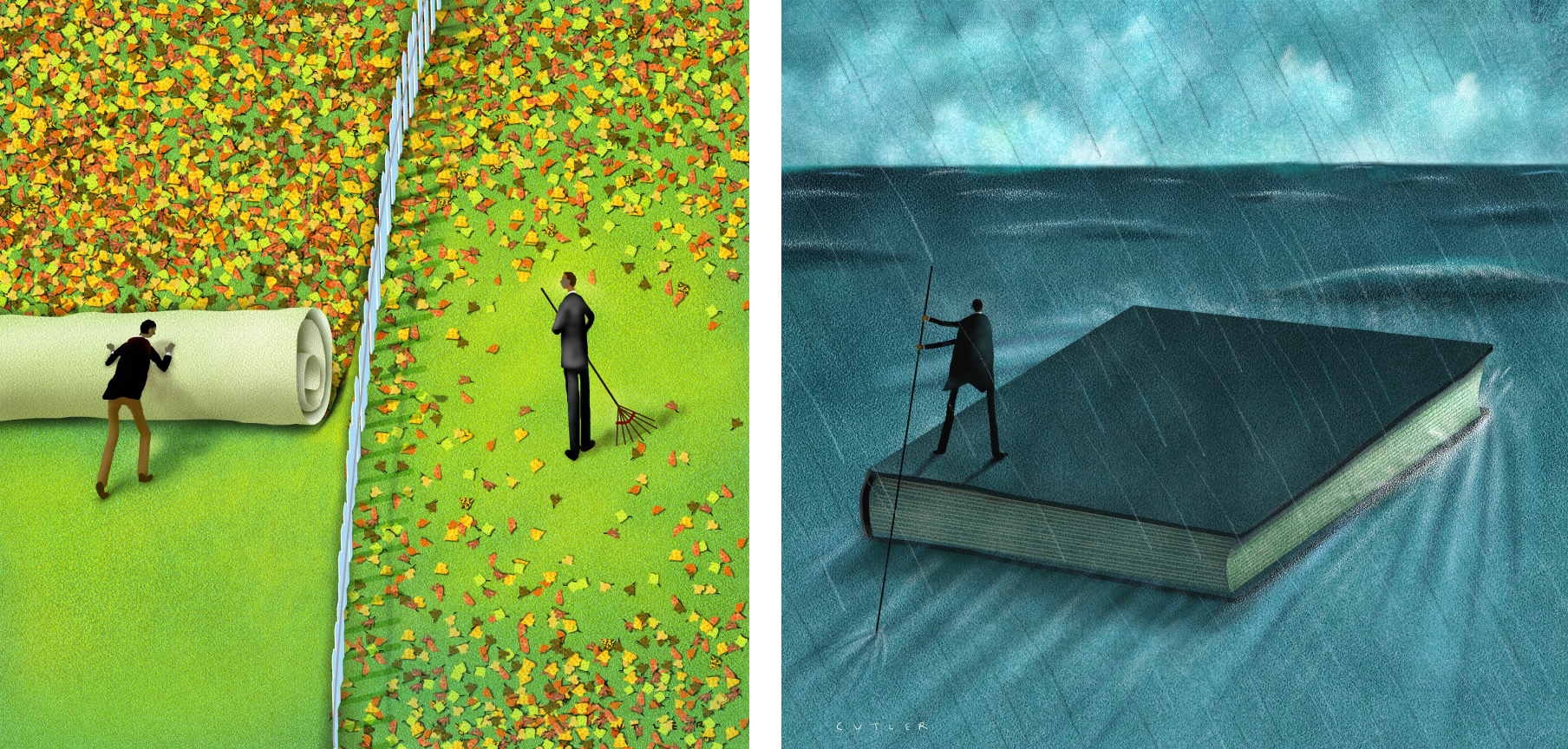
I guess that depends on how you measure success, no? As an artist, if I can create a beautiful, elegant image that speaks to whomever looks at it, then I feel I’ve been successful. As an illustrator, if I can create an image that I envision and one that my client absolutely loves, that’s a success. As a business person, having a steady stream of work that pays the bills and then some means success. Sometimes all three are in alignment and I feel like a successful person. Sometimes that’s not the case, which is why I often describe my career as a roller coaster ride.
Sometimes when there is either very little time or the client has no budget and says ‘do what you want’ I jump right into the painting without sketching concepts first. It’s a little bit scary but obviously freeing at the same time. It truly is a “blank canvas” that I’m starting from. Fortunately the results for the most part have been pretty good. In fact I just did something like that recently and the piece turned out to be one of my favorites of the year.

I would say that my greatest “experiment” in illustration took place several years ago when there was very little digital illustration available except for vector art. A small startup in California had released a program called PAINTER which attempted to emulate natural painting using a computer. To me this was a perfect meld of two things I loved, technology and creating art.
So I jumped in, trying to use PAINTER to recreate my style, which at the time was done with acrylic paints on paper. At that time my computer – an Apple- did not have the processing power to create the painting naturally unless I worked at low resolution. Otherwise when working at the resolution needed to reproduce on paper for client publications, the screen would refresh every time I put down “virtual” paint which was very frustrating.
So in between painting assignments in acrylic, I would sit down at the computer and recreate a piece digitally and in low-res, refining my technique to better recreate my traditional style. Eventually computers’ processing power caught up and I was finally able to work in high resolution. I begged some of my long-time clients to let me create illustrations digitally and some were kind enough and brave enough to let me go for it. (Looking at my earlier digital work I’d say those clients were very brave indeed.) But eventually I refined the digital style so that even my family and close clients could not easily distinguish between my traditional and digital work. At that point there was no turning back and I went completely digital.
It’s probably been 20 years now since I jumped into the digital world so it’s probably time for my next “wild experiment” in illustration. Any suggestions?
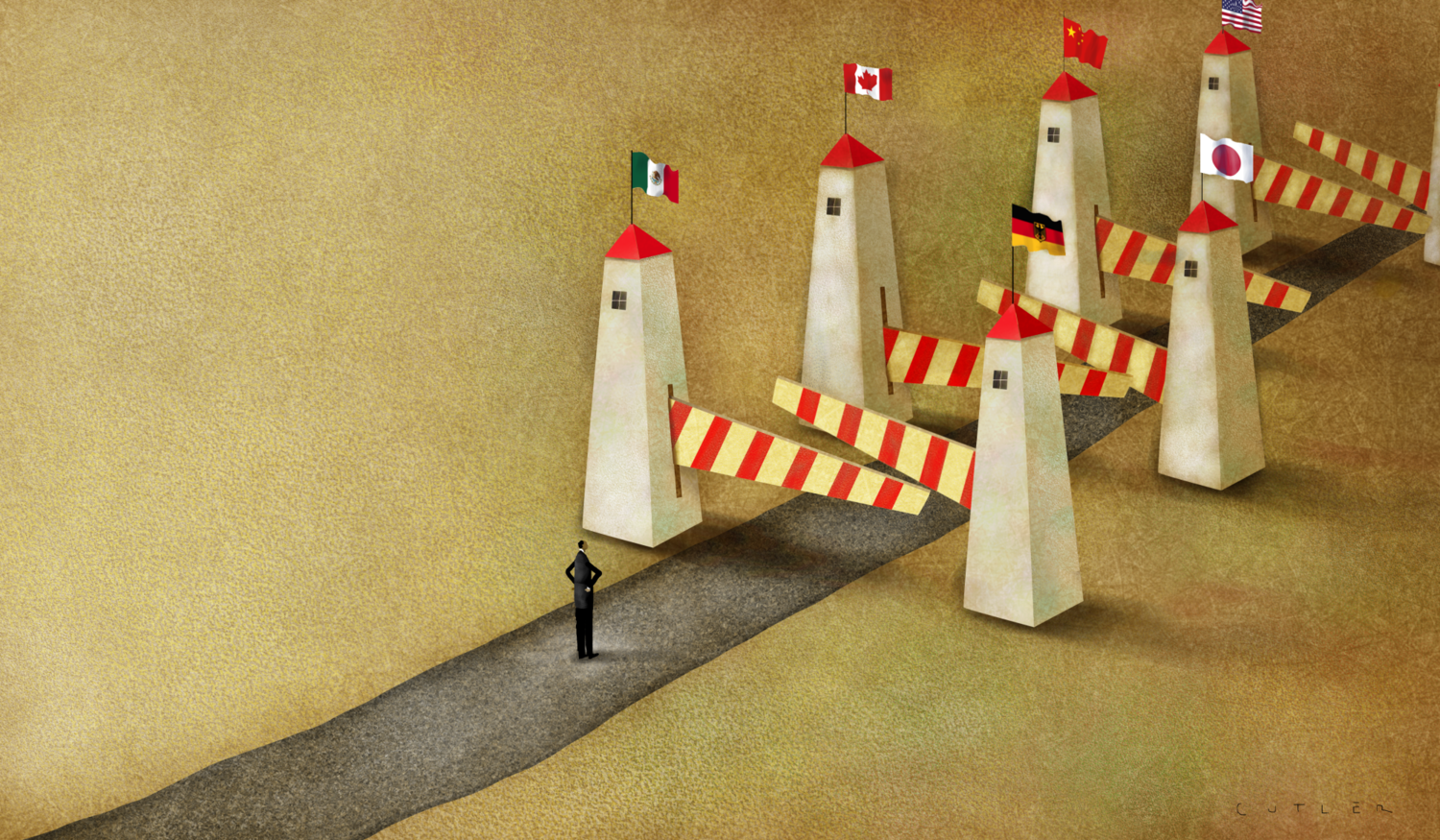
For me it’s an almost insatiable need to always be creating something, be it an illustration or a product idea. I’ve been that way, creating art or inventing something, since I was a little boy working in my parent’s basement.
As an adult working from my home studio, I have the freedom to set my own schedule so I can work on both depending on deadlines. The caveat is that my work day can be 12 hours long or often longer. But the truth is I love doing either so much that I don’t even notice the time passing. I can go for hours before someone (or my body) reminds me to take a break and eat something. But I wouldn’t have it any other way.
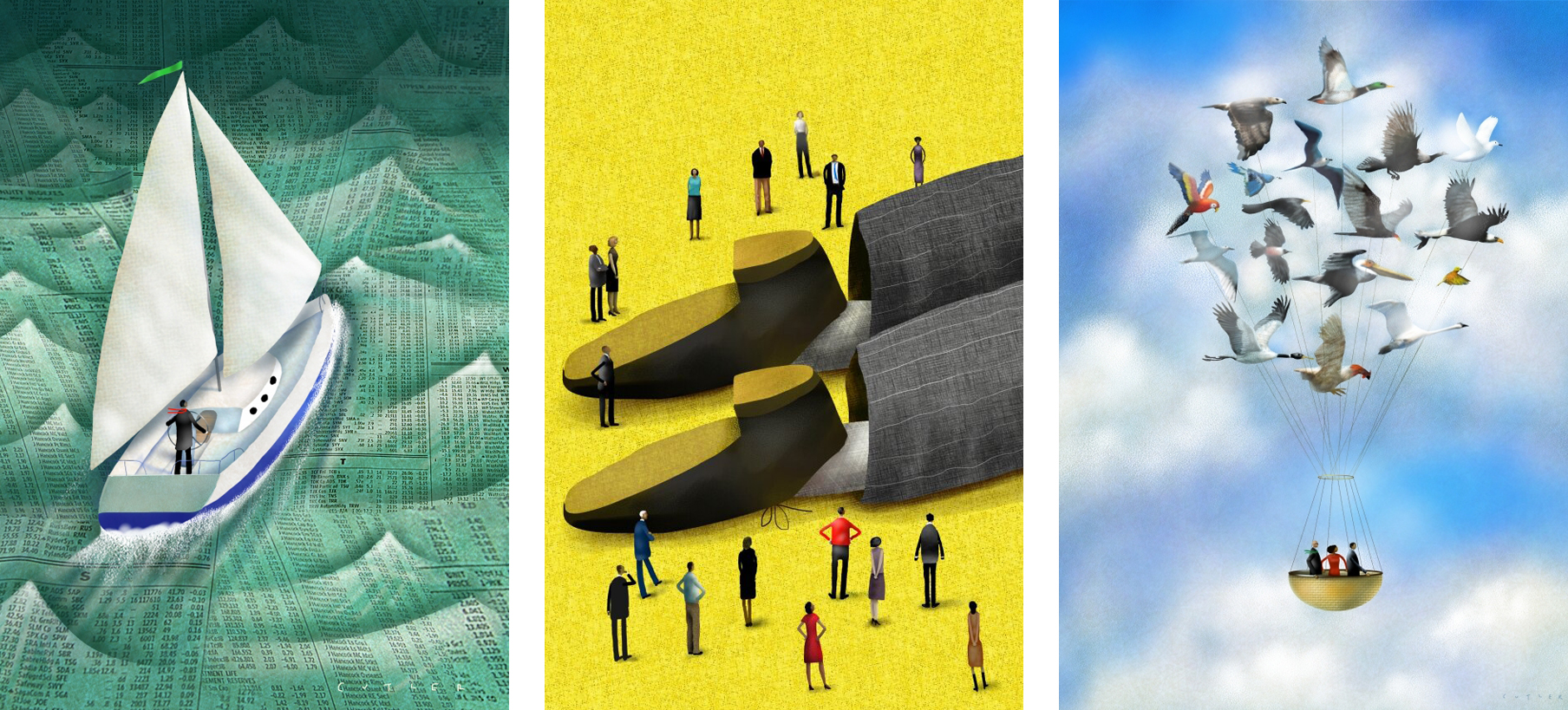
Candidly, I’m the wrong person to ask this question to. I generally thumb through the various illustration directories or annuals when they come out or check out the illustrator websites every once in a while to see what other artists are up to. But I generally don’t read books on illustration. I know, it’s a bit strange.
I know the right thing to do, and what is often recommended, is to get the hell away from my studio and get outside. But I’m very stubborn and determined. So I’ll often sit there staring at my computer for hours trying to squeeze past the block. Sometimes, I’ll go to a creative website, be it for illustration, photography or industrial design to see if something sparks my imagination again. Sometimes I just put my stylus pen to the tablet and doodle, just draw, until things start to happen again. If things get really bad, I’ll finally take the advice and step outside and walk away from it. If there’s time, I’ll call it a day although I hate doing so (as mentioned I’m stubborn). Luckily, I do get through the blocks. Maybe that’s because in reality, I have no choice.
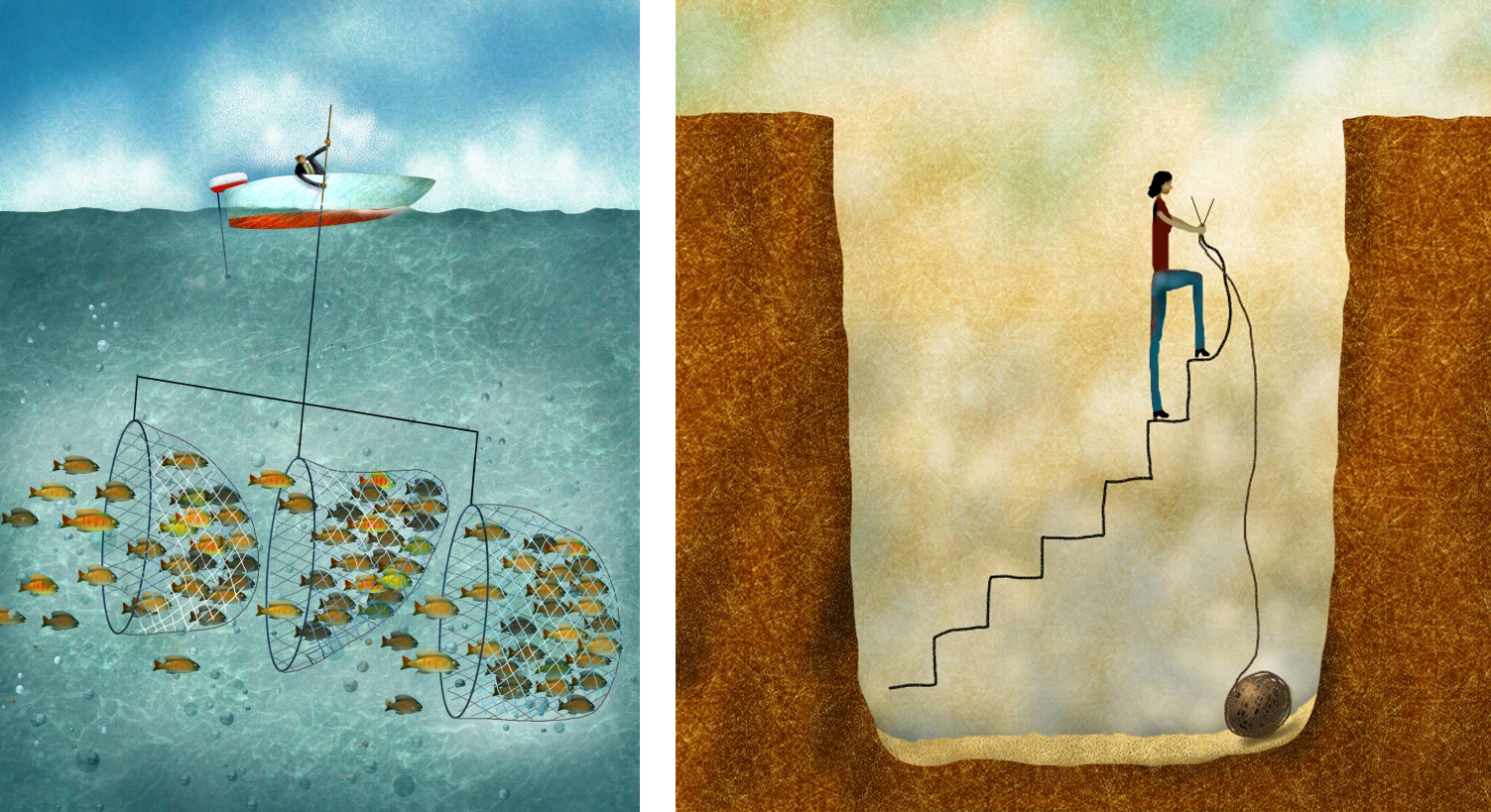
I love sculpture which I think helps me to better create a sense of weight and dimensionality of objects in my illustrations. I also love movies and cinematography which I think helps me create a sense of mood and atmosphere in my images. When it comes to fine art I’m very drawn to texture and overlays of color which I think is apparent in my work.I’m also very drawn to clean, clear graphic design which influences the way in which I compose my images to be simple and clear.
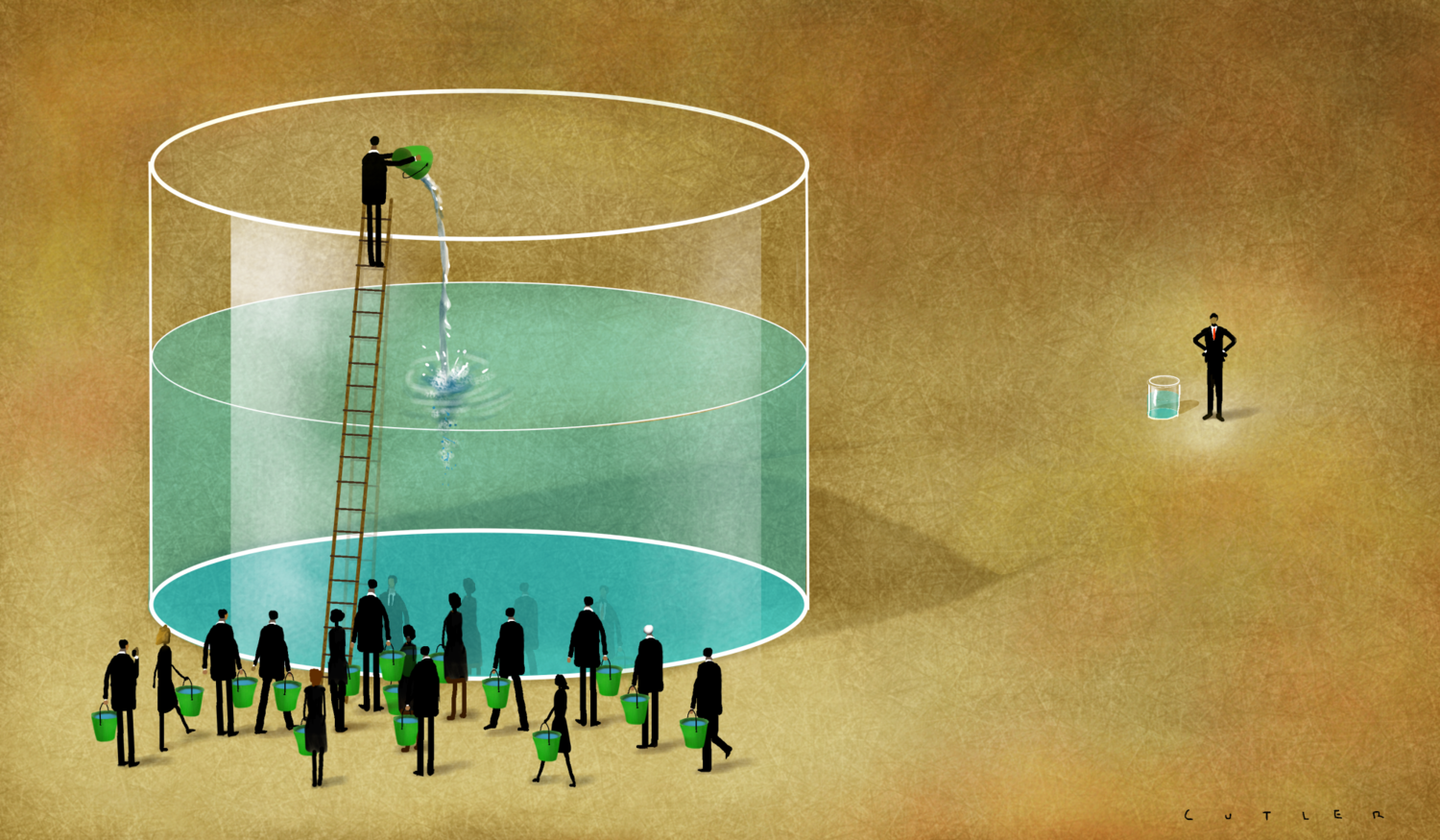
I currently working on pieces for collateral materials for First Republic Bank. It’s a great relationship because they are wonderful to work for and let me to create whimsical images for what can sometimes be pretty dry topics. I’m also working on a piece for CAQH, a healthcare organization. The illustrations I create for them are often more serious in nature which I enjoy as well.
